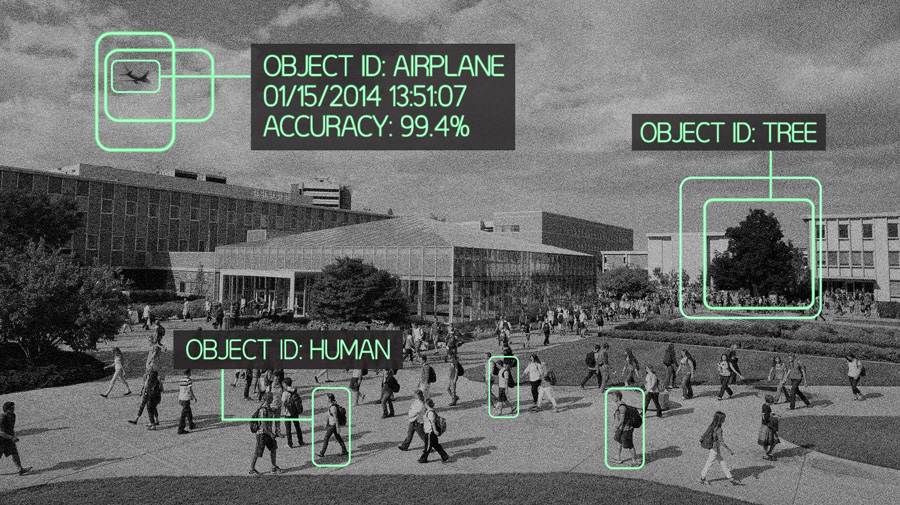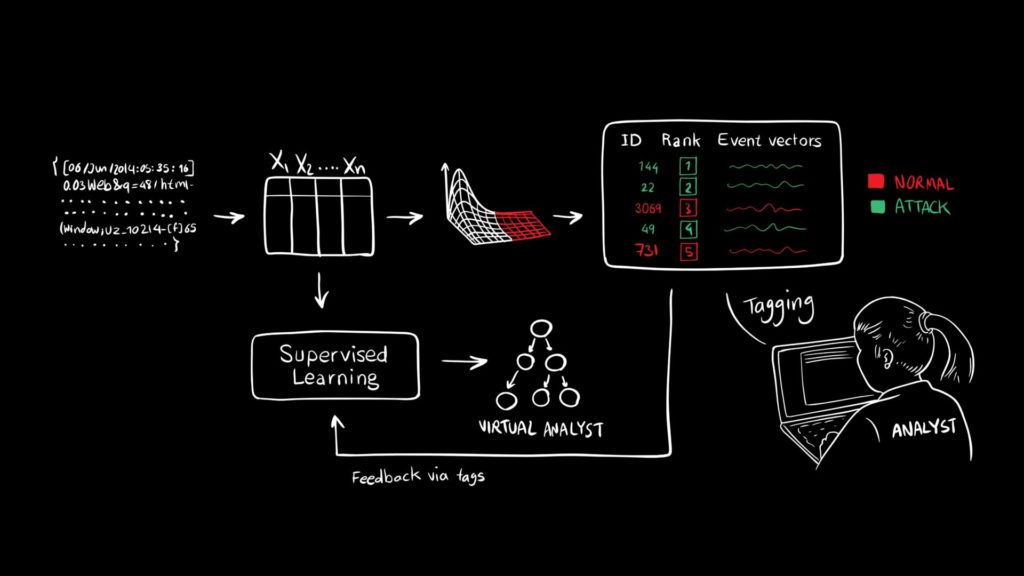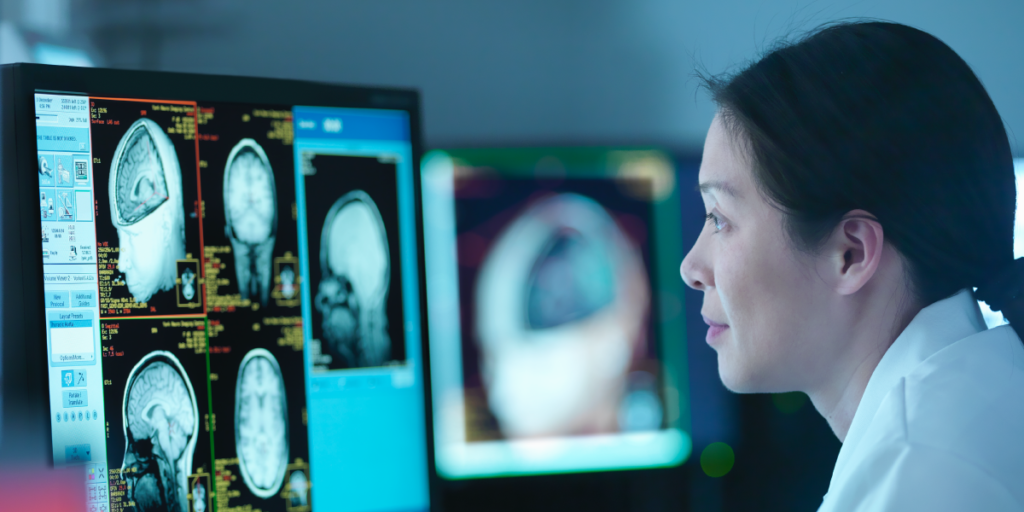Artificial intelligence already impacts many aspects of our daily lives at work, at home, and as we move about. Over the next decade, analyst firm Tractica predicts that annual Global AI enterprise software revenue will grow from $644 million in 2016 to nearly $39 billion by 2025, and services related revenue should reach almost $150 billion. They report that there are six AI segments which will account for a significant percentage of these revenues:
1. Machine learning
2. Natural language processing and understanding
3. Computer vision
4. Machine reasoning
5. Strong AI
6. Deep learning
These functional areas are applicable to many use cases, industries, and generate benefits for both businesses and individuals. Here are the top ten use cases which will reap financial rewards for AI technology product and service companies, and a broad spectrum of benefits for everyone else.
1. Machine and vehicular object detection, identification and avoidance
Self driving cars and other autonomous vehicles are consistently called the “next revolution” in transportation, technology, and some say in civilization in general. Some predict it, along with the growth of the electric vehicle segment could bring an end (or the beginning of the end) of car ownership as we know it as soon as 2030.
Just as with cloud and computing as a service models, it will be interesting to see how consumers and businesses will you can get the transportation value of a vehicle without the maintenance, storage, upgrades and depreciation costs of vehicle ownership, whether they would be willing to either rent out their vehicle on a site like Turo, or rent someone else’scar for a daily rate. Sharing economy leaders Lyft and Uber, and new entrants can easily leverage autonomous cars to facilitate getting a vehicle from one car rental customer to another.
From our partners:
Autonomous forklifts, drones and other robot warehouse workers are already retrieving boxes for shipment for thriving e-commerce companies. As more vehicles are equipped with sensors to calculate distance and routes to their destination, to calculate spatial room between vehicles and to identify potential hazards like pedestrians, poor road conditions and other vehicles. AI-enabled machines and vehicles don’t cause accidents while texting, they don’t fall asleep at the wheel, and they don’t need lunch breaks. A vehicle which can prioritize driving into the ditch or a tree instead of a person can save lives and reduce insurance costs.
Advances in the Internet of Things, geospatial applications and artificial intelligence have aligned to make autonomous vehicles a reality. Autonomous vehicles like Olli aren’t science fiction, they’re a reality.
2. Visual recognition, classification and tagging
In industries like healthcare, policing, media and entertainment, AI provides organizations with the ability to process large volumes of photographs and images, and prepare them for discoverability and reuse. Visual recognition functions like image classification can help physicians to provide better patient care. Combine this with usage of cloud services in healthcare and patients will get, greatly improved care.
3. Patient data processing
Beyond medical image files, other types of structured and unstructured patient data can be mined, categorized and compared against similar cases, either in the patient’s family, or against other patients with a similar case history. Watson helps physicians to diagnose patients more accurately by drawing on millions of patient case records, by suggesting possible care management strategies which have been effective in similar cases.
Artificial intelligence is helping doctors to make more accurate diagnoses, prescribe medication which is more effective at addressing patient symptoms, and eliminate duplicative services or unnecessary hospital visits. This benefits patients in terms of better care, and it benefits the healthcare systems by reducing waste in spending. Watson is in use to better manage the full lifecycle of patient data for diseases like cancer, Schizophrenia, and conditions which are passed down from parents to children through genetics.
4. Algorithmic financial trading strategy performance management
Much like with healthcare, financial services data is fast-moving, is highly regulated and Exchange Traded Fund (ETF) data requires a high level of security much like patient data does. Unlike human traders, AI-driven algorithms like Watson’s Equbot can analyze a ten-year history of stocks and real estate holdings in fractions of seconds, as opposed to taking hours or days, and still making decisions influenced by emotion.
Watson can help investors by making data-driven decisions on when to buy, hold and sell equities. It can also help regulators to identify rogue traders who are making fraudulent securities transactions. Watson Financial Services reduces the risk of misconduct, while addressing the multitude of regulatory requirements trading firms need to adhere to on an ongoing basis.
5. Localization and mapping
It goes without saying that self-driving cars need up-to-the-minute details on the roads and road conditions that it is driving on. It also needs to maintain Simultaneous Localization and Mapping so the autonomous vehicle doesn’t “SLAM” into other cars and trucks on the roadway. AI helps to guide vehicles to their intended destination, relative to other vehicles, buildings, and other obstructions.
For autonomous vehicles, robots, drones and cargo-carrying transports which are governed by AI, geospatial applications can play a role in tracking trends in location-related business data. It could track the locations of customers that buy a certain manufacturer’s product, or identify regions with an ideal demographic for propensity to buy high-end electronics, for example. Companies can use this data to improve their marketing, customer service, and product value.
6. Predictive maintenance
For manufacturers with high-value machinery, airlines with large fleets of planes, or car rental chains with many vehicles, protecting the value of their assets is critical. AI can help these companies (and others) to keep track of when wearable parts were last replaced when servicing needs to be completed next, and how long equipment or vehicles are in service.
Predictive maintenance reduces the frequency of equipment failures, as preventative action can be taken to refurbish or tune assets on a scheduled basis. Maintenance can take place relative to manufacturing or service requirements. For example, if certain equipment is required for a specific product run, it can be serviced outside of those parameters. Or when a ship is scheduled to be in port for a specific time period, it can be serviced such that it won’t impact service level agreements.
AI can determine the possible outcome if maintenance doesn’t occur, and make an accurate determination when equipment or vehicles should be taken out of a service rotation based on failure patterns or age. Sensors can monitor asset performance and transmit the data back to a cognitive analytics hub through the Internet of Things.
7. Prevention of cybersecurity threats
Government organizations, commercial enterprises, and freelance white hat security experts try valiantly to keep ahead of the latest spyware, botnets, DDoS attack patterns, and other threats in cyberspace. Yet hackers are constantly seeking new vulnerabilities to exploit and encryption defenses to topple.
Cognitive Security systems scour the vast amounts of threat intelligence available on the internet and help companies and public sector organizations to remediate their network and service perimeters before hackers can prey upon them. Human security analysts do their best to keep pace with the latest threats, but in many cases, they are overwhelmed by Zero Day viruses and other emerging threats. Cognitive security is a way for companies to gain leverage through deep learning and strong AI.
8. Converting paperwork into digital data
Processes like document scanning, Optical Character Recognition (OCR) processing, and other conversion processes have leveraged applications like Datacap for years now to digitize large volume s of invoices, medical records, contracts, and other unstructured files.
Cognitive capture leverages Artificial Intelligence/Machine Learning to expedite the process of “training” their systems to recognize key metadata (like employee numbers, invoice numbers, or loan numbers) and digitize records more effectively. It also liberates companies from scanning application/service vendor lock-in. Cognitive capture leverages innovative cloud, machine learning, and open source architecture to convert unstructured data into powerful insights through analytics. It also helps companies to meet regulatory requirements without the burden of storing paper records, and increases the speed and accuracy of information discoverability. Instead of just extracting the text, images and signatures from documents, cognitive capture learns the context of documents, and can trigger workflows accordingly, to either file documents away in a repository, or send it to a case management system, accounts receivable or other application for immediate attention.
9. Intelligent recruitment and HR systems
Traditional applicant tracking systems can be great at filtering out unqualified online job applications, yet they can sometimes eliminate qualified candidates in the process, should a resume not be optimized based on the right keyword phrases. AI makes finding the right employment candidate a smarter process, by going beyond the basic words on a resume to determine job fit, it adds context based on reasoning and human inputs. It can help gather the best possible pipeline of candidates for an employer based on the type of employment, skillsets and personality traits gathered from a variety of inputs.
AI also enhances traditional HR information systems by recommending career paths for certain employees, determines the best way to coach, motivate and engage employees based on their personality, mindset and other characteristics. Making better hires is a good start, however retaining employees, and ensuring they are mentored and tasked with work which challenges them to do their best work is part science, part art form and part algorithm.
10. Medical image analysis
Merge Healthcare, an IBM company, manages over a billion medical images in the cloud. With X-Rays, MRIs, ultrasounds and other files, they need the help of Watson Health Imaging to classify the images. Watson Health Imaging can classify images by body part, tissue type and other categories and tag the image. In turn, this creates a deeper understanding of the relationships between multiple files and help physicians retain medical images from patients. Because of this, it help physicians to better treat other patients with similar symptoms and cases. The more accessible these images are to medical professionals through community sites like Colleaga.org (which is built on a Watson AI platform), the more effective healthcare practitioners can be.
These are ten of the leading market sectors which are generating revenue for developers of artificial intelligence software, and service providers in this space. There are other segments like public safety, customer service and other sectors which are growing, and others will continue to emerge.
This feature is from IBM.
For more information on using Artificial Intelligence to keep your financial data safe, check out the infographic below:
Infographic created by Donnelley Financial Solutions, a virtual data room provider




















